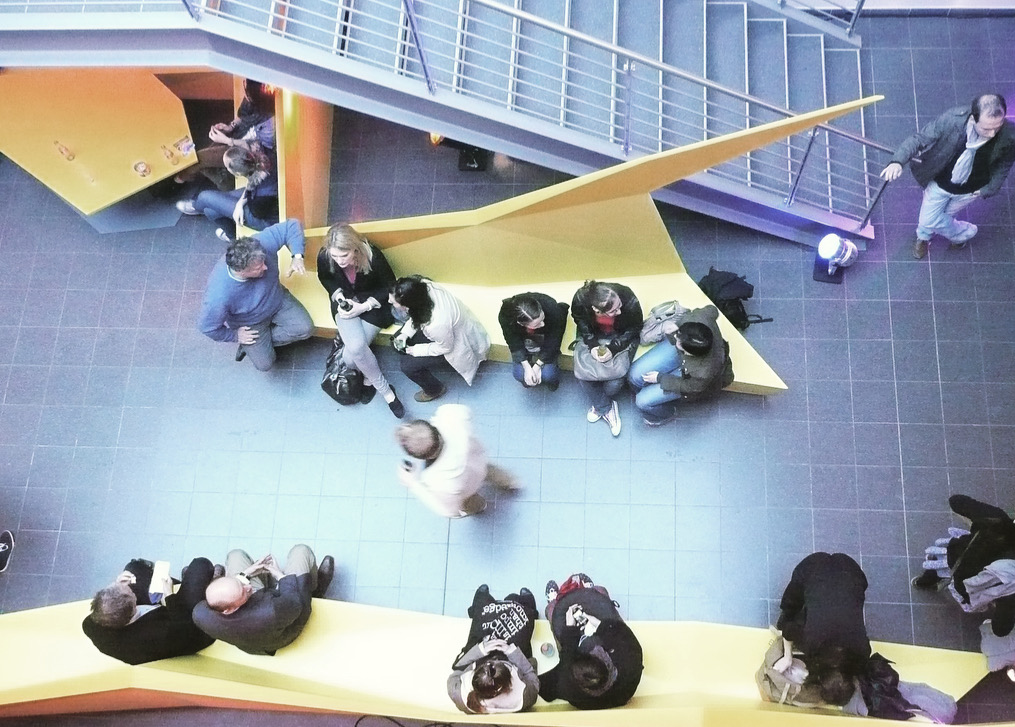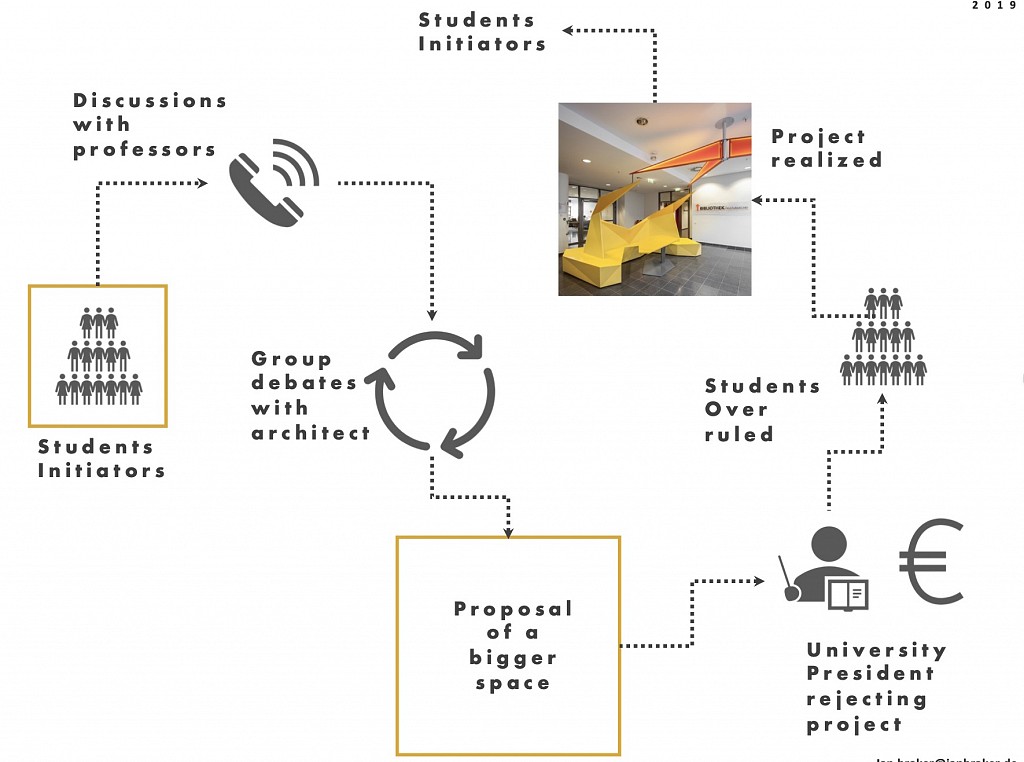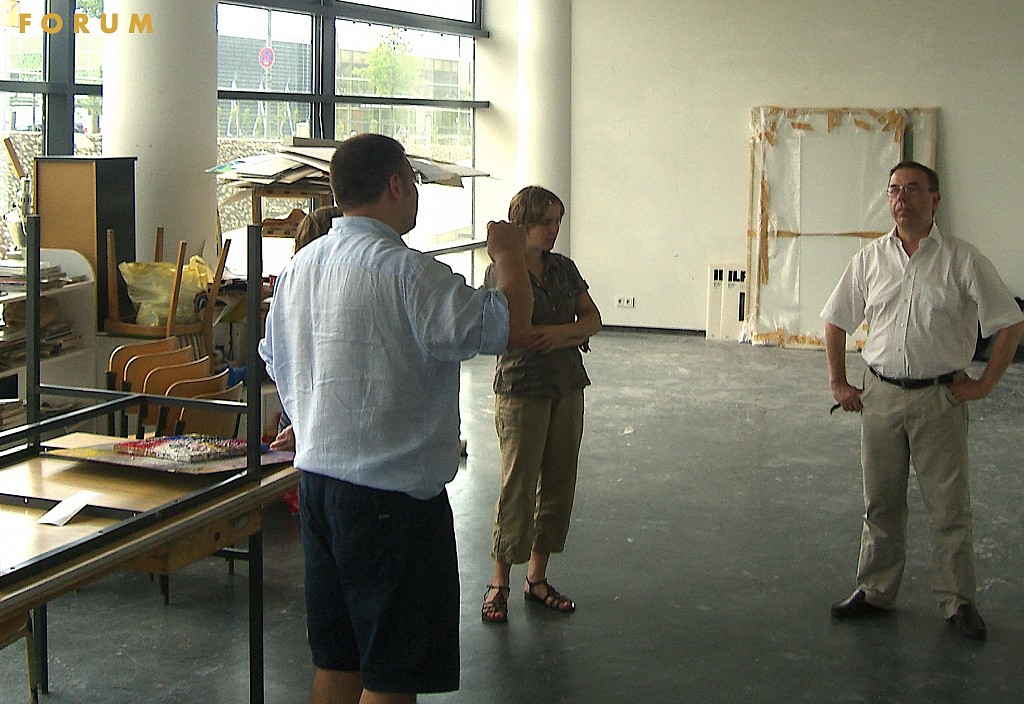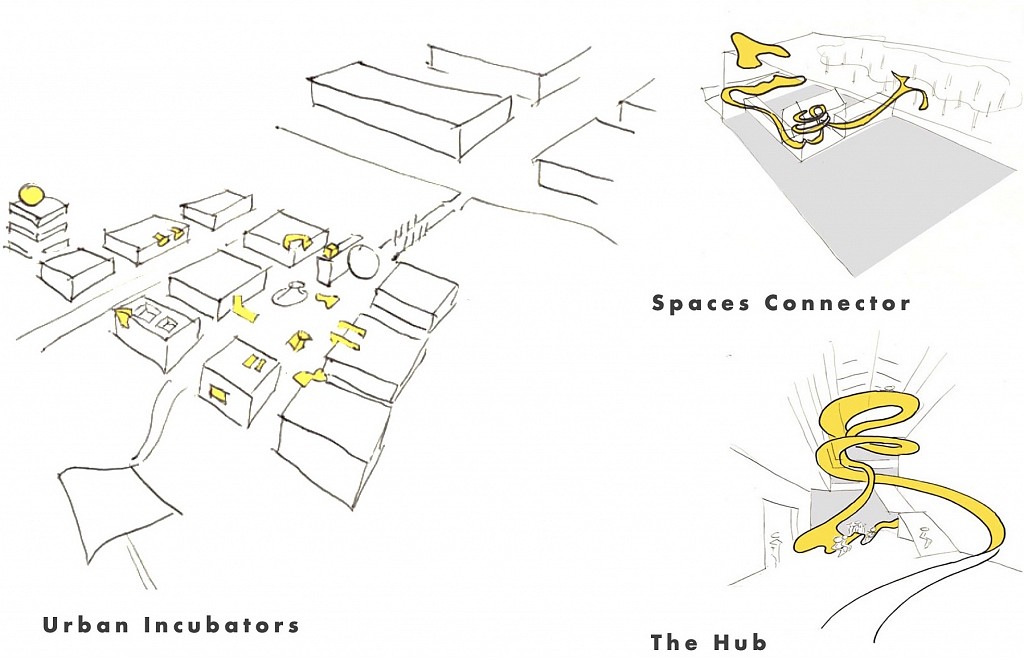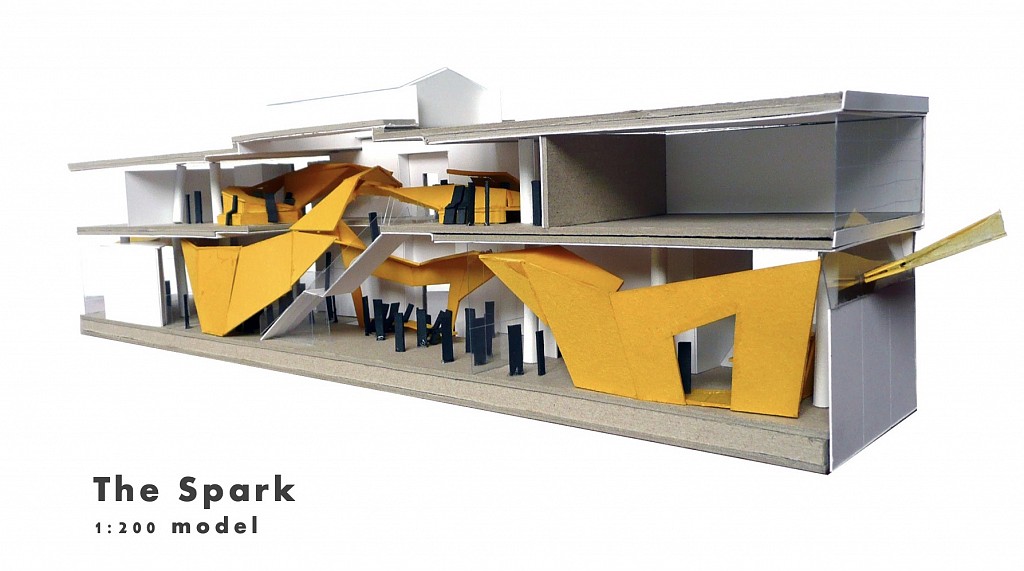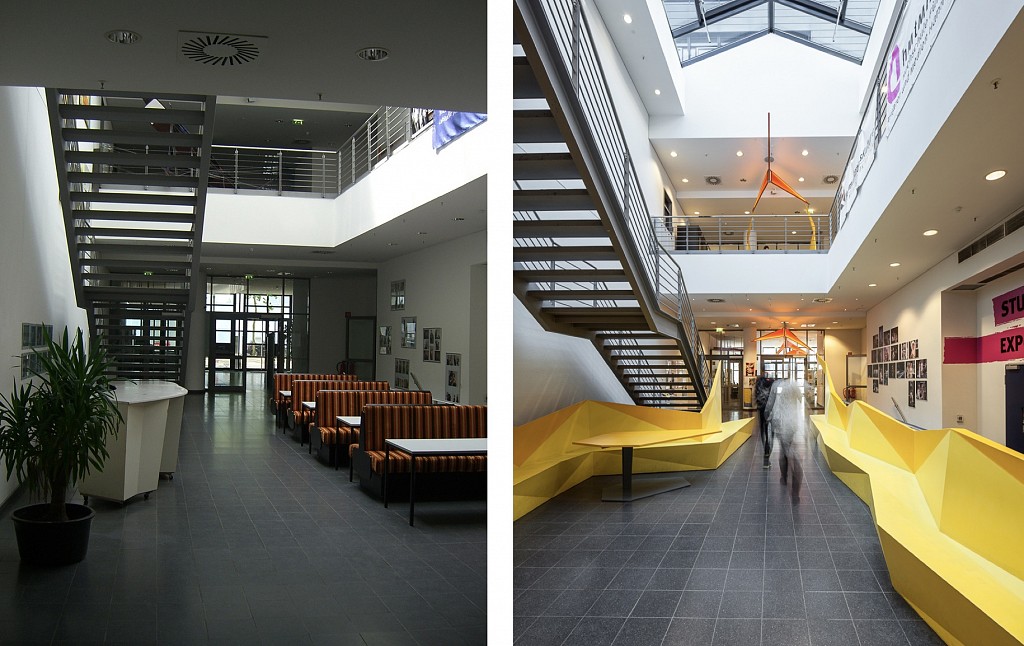Wenn partizipatives Design zu einem demokratischen Einflussbereich wird
„Es ist schwierig, einen Raum zu gestalten, der keine Menschen anzieht. Bemerkenswert ist, wie oft dies erreicht wurde. “W. Whyte, 1980Brainstorming, Debatte, dann Erstellen; drei Aktionen, die den Begriff „Partizipatives Design“ enthalten. Sie sind die Hauptparameter für ein gutes Design, und keiner von ihnen kann von einer einzelnen Person ausgeführt werden. Partizipatives Design ist eine Vorgehensweise, mit der soziale Beziehungen in einem demokratischen Einflussbereich interpretiert und gestärkt werden können.Die Schaffung eines erfolgreichen Raums kann als experimentelle Politik wahrgenommen werden, die es den Instrumenten für die Teilnahme ermöglichen sollte, richtig zu handeln. Durch den Prozess der Diskussion und Entscheidungsfindung wird der Benutzer als die effektivste Stimme angesehen, die anerkannt werden sollte. Wenn der Raum privat ist, ist es normalerweise zweckmäßig, diese Stimme zu berücksichtigen, aber wenn der Raum unter einige institutionelle Agenden fällt, verdunkeln andere Faktoren diese Stimme.
Im Jahr 2008 wurde ein ehemaliges Bürogebäude während der Weltausstellung in Hannover zu Beginn der Jahrtausende mit dem Namen „Kurt Schwitters Forum“ diskutiert, umgestaltet zu werden. Der Raum war eine Zwischenzone zwischen der Hochschule für Musik und Theater Hannover und der Fachhochschule Hannover. Während der Neuerstellung des Raums hatten viele Beteiligte ihren Anteil an der Gestaltung des Endergebnisses durch Phasen der Beteiligung. der Architekt, die Angestellten, die Lehrer und die Schüler beider Hochschulen. Die Idee war, eine ausdrucksstarke formale Sprache zu schaffen, die vom Merzbau-Kunstwerk des berühmten Dada-Künstlers „Kurt Schwitters“ inspiriert ist und alle Räume miteinander verbindet und eine inspirierende spielerische Atmosphäre für die Benutzer und hauptsächlich die Studenten schafft, die die Räume besuchen. Aus finanziellen Gründen stand das Projekt kurz vor dem Stillstand, als die damalige Studentenvereinigung einsprang und den Stopp in die Fortsetzung mischte. Sie forderten die Realisierung eines Raums, in dem ihre täglichen Treffen, ihre sozialen Interaktionen und ihre Probenpausen bequem untergebracht werden konnten, und sie nahmen kein Nein als Antwort, sie kämpften dafür. Historisch gesehen haben die Studentengewerkschaften in Deutschland seit den Protesten von 1967, als die Studenten auf die Straße gingen und gegen die Begrenzung ihrer Zahl an den Universitäten und die ungerechtfertigten Anpassungen der Lehrpläne demonstrierten, immer für ihre Rechte gekämpft. Seit diesem Jahr haben die Schüler gelernt, sich politisch und sozial zu verteidigen und andere zu inspirieren, sich zu beteiligen und für den richtigen Ruf einzutreten.Dieses Papier nimmt das Projekt des „Kurt Schwitters Forums“ als starkes Beispiel für die Konvergenz zwischen Design und kultureller Sozialgeschichte. Es zeigt, wie wichtig partizipatives Design für die Schaffung aktiver Räume ist, die die Bedürfnisse seiner Benutzer erfüllen. Durch die Überprüfung der Geschichte der Studentengewerkschaften in Deutschland wird erklärt, wie die Studenten, die die Fallstudie verwenden, eine wirksame Rolle bei der Umwandlung eines regulären Raums in ein aktives Gebiet gespielt haben. Die Forschung betont auch die Tatsache, dass es insbesondere bei der Verbesserung von Bildungsräumen teilweise darum geht, an den Willen der jungen Generationen zu glauben und sie in die Entscheidungsprozesse einzubeziehen. Eine Beteiligung, die Führungskräfte schaffen würde, die öffentliche Räume erhalten, erhalten und verändern können, von leeren Zwischenzonen zu interaktiven Räumen für alle.
- Ort
- Polytechnische Universität Katalonien, Barcelona
- Jahr
- 2019
- Status
- Wissenschaftl. Aufsatz / Konferenz
- Verfasser
- Bedour Braker, Ph.D. & Jan Braker, Dipl.-Ing.
- Art
- Konferenz
- Veranstalter
- Polytechnische Universität von Katalonien
- Präsentiert
- 29-30-31 Mai 2019
- Link
- https://pa.upc.edu/ca/Varis/altres/arqs/congresos/conference-arquitectonics-mind-land-and-society-2019-2/book_fullpapers
